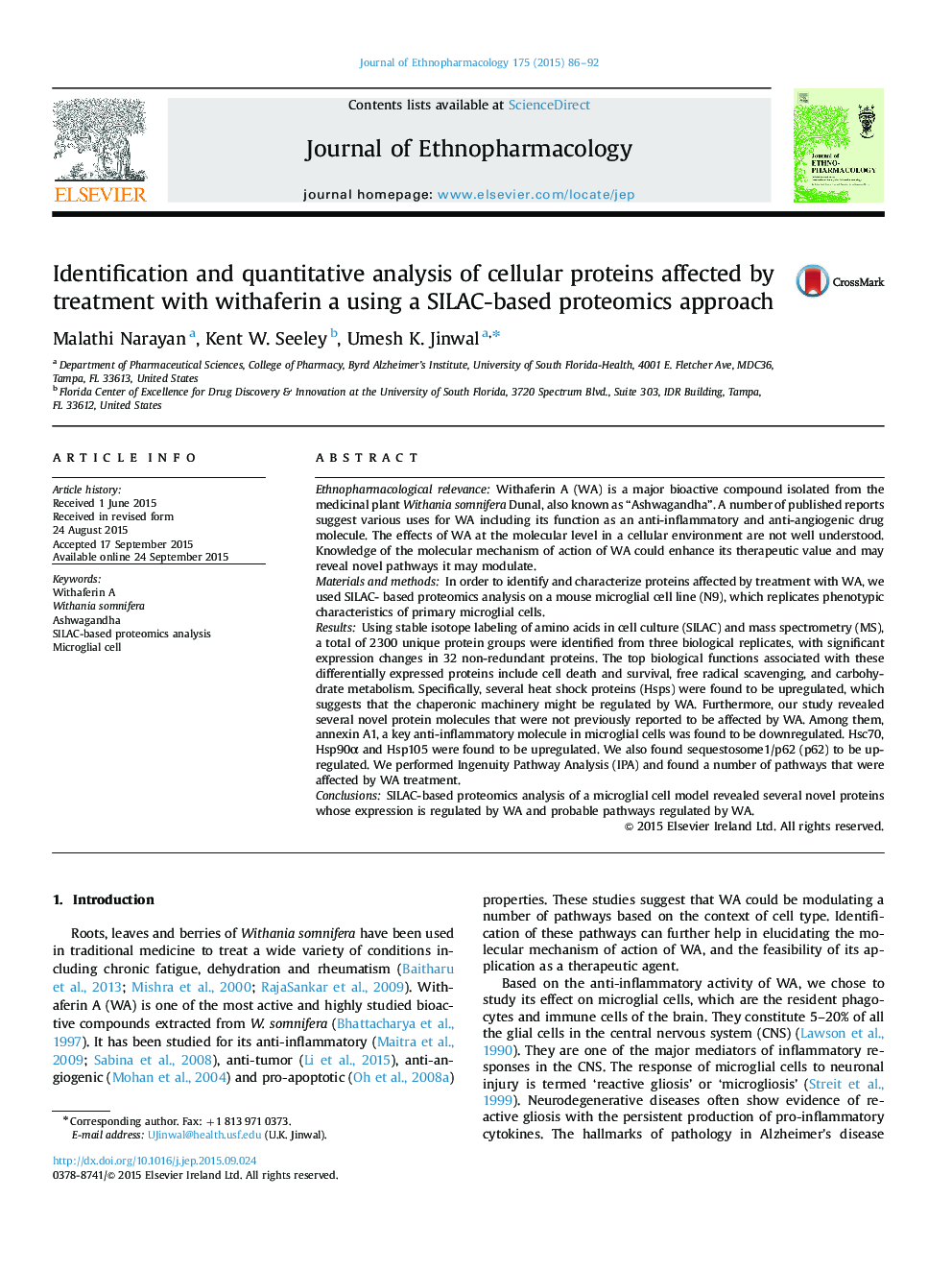| کد مقاله | کد نشریه | سال انتشار | مقاله انگلیسی | نسخه تمام متن |
|---|---|---|---|---|
| 2544908 | 1560387 | 2015 | 7 صفحه PDF | دانلود رایگان |

Ethnopharmacological relevanceWithaferin A (WA) is a major bioactive compound isolated from the medicinal plant Withania somnifera Dunal, also known as “Ashwagandha”. A number of published reports suggest various uses for WA including its function as an anti-inflammatory and anti-angiogenic drug molecule. The effects of WA at the molecular level in a cellular environment are not well understood. Knowledge of the molecular mechanism of action of WA could enhance its therapeutic value and may reveal novel pathways it may modulate.Materials and methodsIn order to identify and characterize proteins affected by treatment with WA, we used SILAC- based proteomics analysis on a mouse microglial cell line (N9), which replicates phenotypic characteristics of primary microglial cells.ResultsUsing stable isotope labeling of amino acids in cell culture (SILAC) and mass spectrometry (MS), a total of 2300 unique protein groups were identified from three biological replicates, with significant expression changes in 32 non-redundant proteins. The top biological functions associated with these differentially expressed proteins include cell death and survival, free radical scavenging, and carbohydrate metabolism. Specifically, several heat shock proteins (Hsps) were found to be upregulated, which suggests that the chaperonic machinery might be regulated by WA. Furthermore, our study revealed several novel protein molecules that were not previously reported to be affected by WA. Among them, annexin A1, a key anti-inflammatory molecule in microglial cells was found to be downregulated. Hsc70, Hsp90α and Hsp105 were found to be upregulated. We also found sequestosome1/p62 (p62) to be upregulated. We performed Ingenuity Pathway Analysis (IPA) and found a number of pathways that were affected by WA treatment.ConclusionsSILAC-based proteomics analysis of a microglial cell model revealed several novel proteins whose expression is regulated by WA and probable pathways regulated by WA.
Figure optionsDownload high-quality image (117 K)Download as PowerPoint slide
Journal: Journal of Ethnopharmacology - Volume 175, 4 December 2015, Pages 86–92